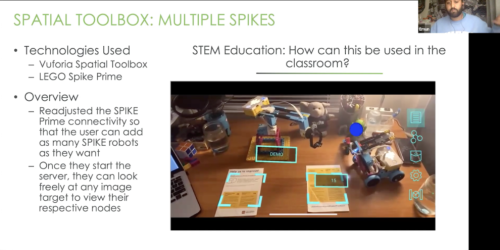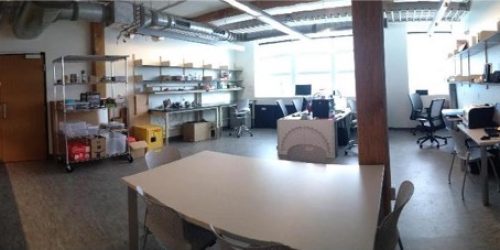by Brian O’Connell, Doctoral Student in Mechanical Engineering
For the early part of 2016, I had the pleasure of being a visiting scholar at Queensland University of Technology in Brisbane. The original purpose of the trip was to assist them in setting up a makerspace. As is the way of things, plans made via email and skype may not survive a trip halfway across the world. The availability of physical space fluctuated, the schedules of individuals filled with the perils of their fall semester, and the soft funding complicated as it is wont to do. So although I continued to lobby for a makerspace at QUT throughout my trip, I found other ways to find success in that trip.
Australia released the New Australian Curriculum in 2012 and Queensland began adopting it in 2015. The Queensland Department of Education and Training encouraged teachers to collaborate and figure out how to best utilize a variety of technologies in education. They have set up many online resources such as their Dream Factory edStudio, an online forum for educators to discuss educational technologies, and providing some schools with various technologies, such as iPads with Minecraft and 3D printers, to research and see their benefits. This brought a new focus on STEM and makerspaces in the educational community. I served as a resource for the education students at QUT and the staff of the local schools, answering their questions about STEM learning, educational technologies, and makerspaces in general.
 This top-down integration of STEM into the Australian education system quickly generated a lot of questions from the teachers regarding implementation. I did my best to answer these questions in several different forums. I was able to connect directly with many faculty and administrators from several state schools in the greater Brisbane and Redcliffe areas through workshops and various meetings. I led several PaperBots and LEGO workshops, both for students and for teachers. A panel for the 1st and 3rd-year education students at QUT invited me to speak. I also ran a LEGO EV3 workshop for a property group involved in developing new schools for their employees and some students from a local school. Throughout the World Science Festival in Brisbane, I facilitated LEGO challenges for the children in attendance. There was even an interview on public radio focusing on different STEM career paths.
This top-down integration of STEM into the Australian education system quickly generated a lot of questions from the teachers regarding implementation. I did my best to answer these questions in several different forums. I was able to connect directly with many faculty and administrators from several state schools in the greater Brisbane and Redcliffe areas through workshops and various meetings. I led several PaperBots and LEGO workshops, both for students and for teachers. A panel for the 1st and 3rd-year education students at QUT invited me to speak. I also ran a LEGO EV3 workshop for a property group involved in developing new schools for their employees and some students from a local school. Throughout the World Science Festival in Brisbane, I facilitated LEGO challenges for the children in attendance. There was even an interview on public radio focusing on different STEM career paths.
A few things were predominant in these interactions. Although optimistic and eager to implement more STEM activities in their classroom, major questions persisted about what counted as technology, what engineering in the classroom meant, and what a makerspace actually was. The teachers often just googled answers to these questions, leading many simply learning Scratch or participating in Hour of Code as their inclusion of STEM in the classroom, thinking that this constituted engineering and doing it on the iPad satisfied the technology part of STEM. While learning a coding language is certainly a useful tool, it is not in and of itself engineering. Many were unclear about the engineering design process and implemented simplified models and other teaching solutions they found online.
 The same was true of Makerspaces. The most common misconception among the Australian educators, one I have witnessed closer to Tufts as well, was that you needed to buy a 3d printer and have a lot of electronics available in order to start a makerspace. My main advice was to ignore the first few dozen hits when you google “makerspace” and find ways to make it work for your community and within the context of your school. I suggested providing the tools and resources for your students to explore with what you think will lead to your learning goals. Now that can be 3D Printers and lots of electronics, but it can also be a room full of craft and found materials or buckets of LEGO parts or both or even something entirely different.
The same was true of Makerspaces. The most common misconception among the Australian educators, one I have witnessed closer to Tufts as well, was that you needed to buy a 3d printer and have a lot of electronics available in order to start a makerspace. My main advice was to ignore the first few dozen hits when you google “makerspace” and find ways to make it work for your community and within the context of your school. I suggested providing the tools and resources for your students to explore with what you think will lead to your learning goals. Now that can be 3D Printers and lots of electronics, but it can also be a room full of craft and found materials or buckets of LEGO parts or both or even something entirely different.
The major takeaways from my trip would be that the issue with this top-down adoption of STEM curriculum was the lack of local resources tailored to the teachers having to implement it. Most schools I talked with did not have some early adopter who was advocating for these STEM initiatives. In general, the maker movement is not yet as prominent in Queensland as it is in the US so the advocacy and resources for technology education are still limited. But overall the teachers are optimistic and eager to bring these concepts into their classroom. There is real opportunity to help educate them on the options available to them to bring more technology into their classroom and help them to understand what engineering means in a primary classroom and engage with the concept of making and STEM with their students.



